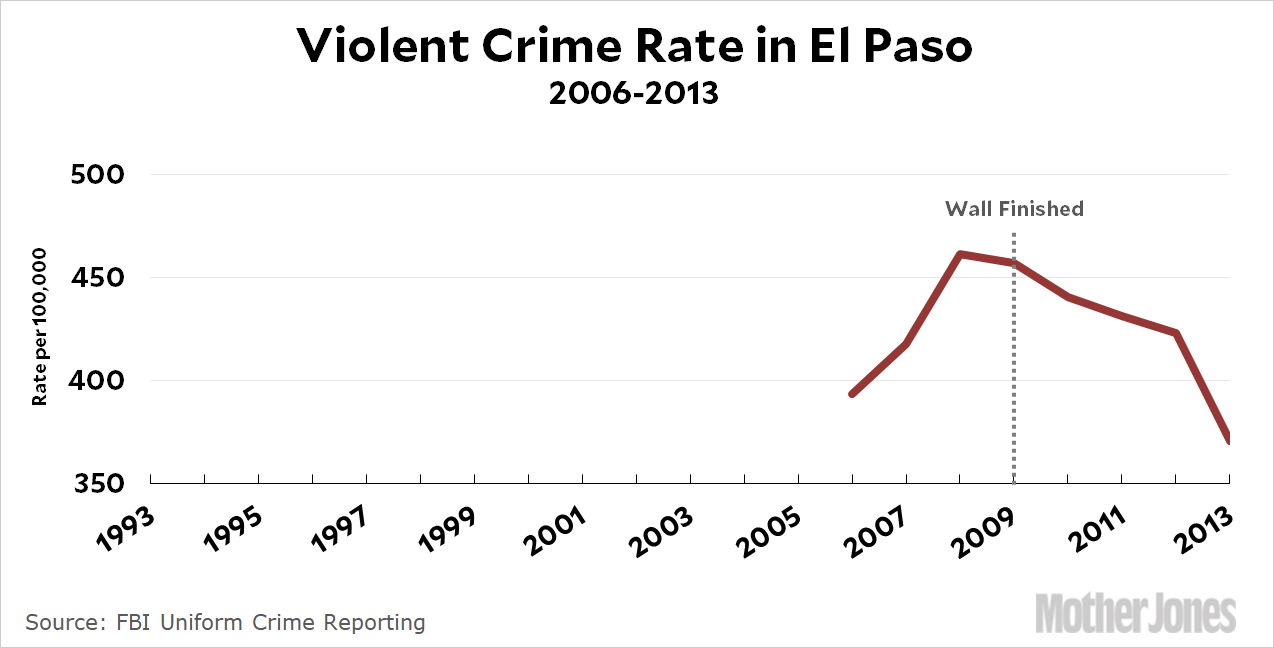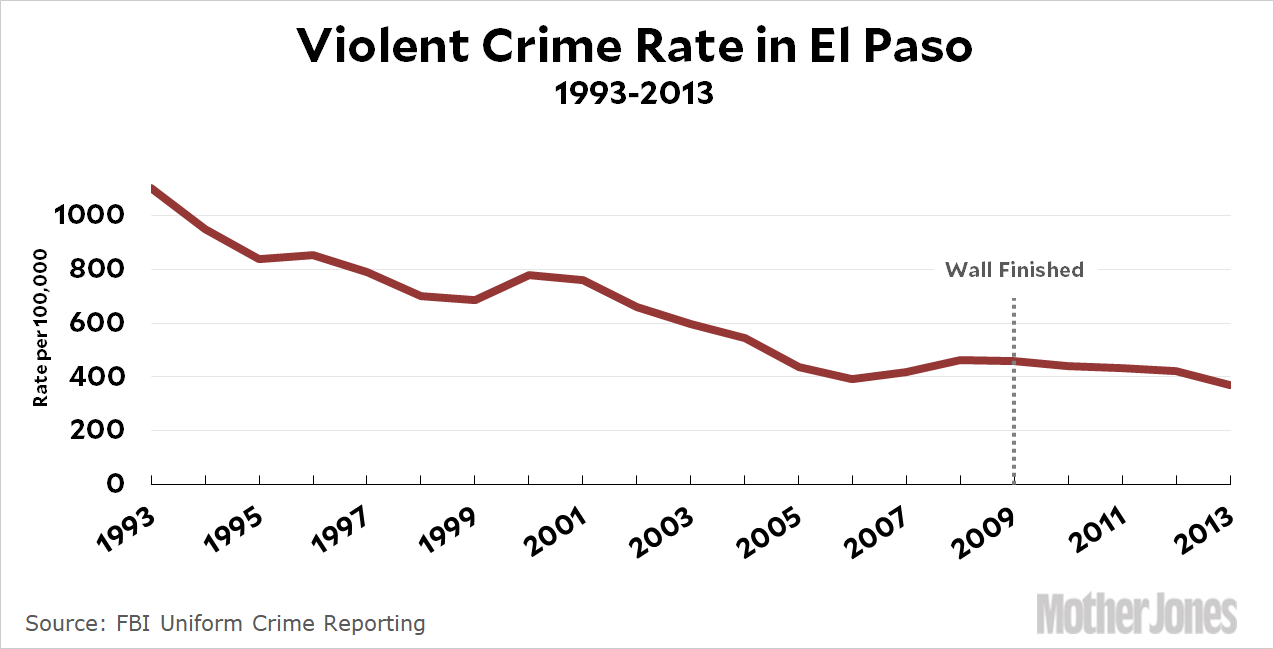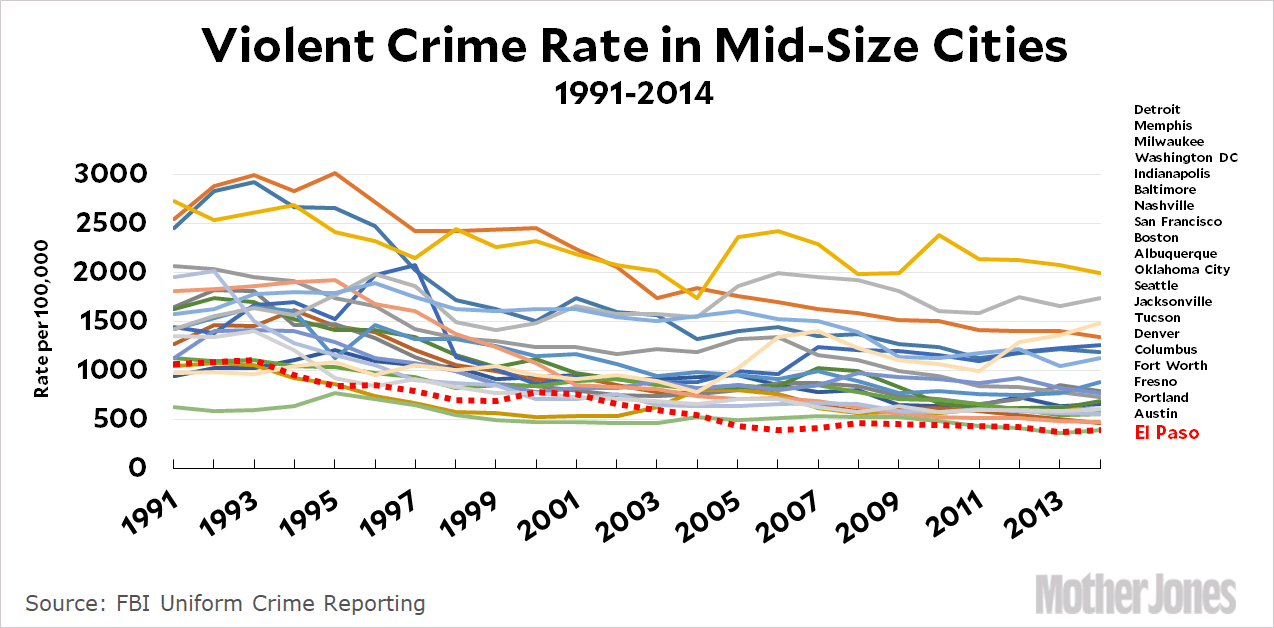At last night’s State of the Union address, President Trump said this:
The border city of El Paso, Texas, used to have extremely high rates of violent crime — one of the highest in the country, and considered one of our Nation’s most dangerous cities. Now, with a powerful barrier in place, El Paso is one of our safest cities.
This is yet another great example of how to lie by cherry picking statistics. Here is the violent crime rate reported by the El Paso Police Department:

Trump was right! Crime was rising, and when they built the wall it suddenly began to plummet. Build that wall!
But wait. Let’s finish up the chart, shall we? Here is violent crime in El Paso since 1993:

With this broader view it’s easy to see that Trump was lying. As with all big cities, crime in El Paso dropped steadily for more than a decade from its peak in 1993. From 2006-08 it had a brief and minor rise—most likely just noise—and then stayed basically flat after that. Plainly the wall had next to no effect.
However, if you carefully pick your starting date at 2006 and then zoom in, you can make it look like the wall had a massive effect. That’s what Team Trump did. And to drive home what an outright lie this was, here’s a chart of the crime rate in every mid-size city in the United States tracked by the FBI:

El Paso has never had “one of the highest” crime rates in the country. In fact, it’s had the lowest crime rate in the country since 2005, and it’s been among the four lowest since 1991. There’s simply no excuse for pretending that El Paso was ever a high-crime city or that it took the construction of a wall to bring down its crime rate. It’s just flatly not true.


















